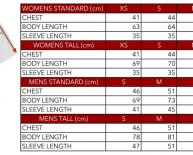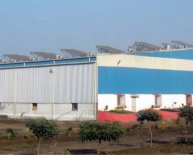
Polyester chips manufacturing process
1. Field of the Invention
This invention is related in general to synthetic compositions and processes for simulating granite and other natural stones in the manufacture of household fixtures and similar articles. In particular, the invention is directed to a new method for producing polyester-chip products such as currently used in the industry for casting such articles by conventional thermosetting molding procedures or by other methods.
2. Description of the Prior Art
With the advent of synthetic materials, many processes and compositions have been developed during the last several decades for simulating granite and other stones in the construction of fixtures and other articles such as sinks, counter tops and miscellaneous decorative objects. The particular compositions and processes used have depended in large part on the specific characteristics of the material being simulated, with different fillers and additives being introduced to match the desired appearance and texture of the final product.
Several patents describe different approaches to simulating natural stone. For Example, U.S. Pat. No. 3, 488, 248 issued to Duggins (1970) discloses a process for making artificial marble based on the extrusion of a flowing, high-viscosity, polymerizing material in which at least one discrete, separately identifiable, continuous phase of a low-viscosity polymerizing material is distributed. The flowing mixture is then cast to form the desired article of manufacture having the color and streak characteristics resulting from the intermediate extrusion step.
In U.S. Pat. No. 3, 906, 065 (1975), Schneider et al. describe a process for making marbled products using thermoplastic resin powders as the initial raw material. Two separate batches of such powder are mixed with a plasticizer, a stabilizer, a filler and a dye, and are heated to produce two differently-colored, flowable thermoplastic agglomerates. The agglomerates are then fed in controlled ratios to an extruder that produces a castable stream of marble-like mixture for forming the desired-shaped marbled product.
In U.S. Pat. No. 4, 544, 584 (1985), Ross et al. disclose a method for manufacturing synthetic onyx using thermosetting organic resins. A prehardened particulate phase of desired color and characteristics is mixed with a hardenable liquid phase and subjected to thermosetting in situ to produce an agglomerate of like hardness. The patent discloses thermosetting polyester resins as preferred for onyx simulation.
Finally, in U.S. Pat. No. 5, 269, 991 (1993), Gueret illustrates a process for making mouldings having the appearance of natural stones. The process combines a thermoplastic resin matrix with fillers based on various fibers with different grain sizes. The mixture is prepared to approximate the appearance of the desired final product and is treated by a conventional thermoplastic forming process, such as by extrusion, injection or other moulding procedures, and then cast into the desired shade. Several thermoplastic resins are disclosed, polypropylene being preferred.
None of the processes described in these patents is actually used in significant scale in the construction-fixture industry. For the most part, current commercial practice consists of utilizing a ready-made synthetic-resin chip or chip/filler mixture as raw material for casting the desired article in a mold, typically by a thermosetting process. The solid resin chip or mixture may be blended with other chips of different colors and/or with additional fillers, and the resulting dry mixture is then combined with liquid polyester resin in the presence of an appropriate thermosetting catalyst for casting or pouring in a mold, or for spraying for setting onto a surface.
Prevalent in the market is the use of a chip mixture formulated on the basis of thermosetting polyester-resin material. As illustrated schematically in FIG. 1, the chip mixture is prepared by mixing a thermosetting resin, such as the unsaturated polyester resin sold under the registered trademark "Polylite" by Reichhold Chemical, Inc. of Jacksonville, Fla., with a filler material, pigments and a resin catalyst, and by pouring the resulting agglomerate in casting molds where it is allowed to react and solidify into homogeneous ingots or blocks. The molded blocks are then removed from the molds, ground to produce a chip of a predetermined size distribution, typically between 0.5 mm and 5 mm in average size, and possibly screened. This chip product is then sold, either as is or mixed with additional filler material, to commercial consumers for casting, pouring or spraying into final products as outlined above.
The present invention is directed at improving the latter process of preparing the resin chip sold to consumers for casting into final products. Typically, the conventional method of preparation outlined above produces between 15 and 30 percent by weight of fines below the acceptable size for utilization in chip form. Because of the thermosetting nature of the polyester resin utilized, this material cannot be recast and can only be reused as colored filler material; therefore, it becomes a process byproduct that is often wasted. In addition, the method requires the use of molds that need to be cleaned and waxed between batch operations, thereby limiting throughput and efficiency.
All of these factors materially affect the cost of production of the resin-chip material used by commercial manufacturers for final casting of molded artificial-stone products. Therefore, there still exists a need for a method of producing resin chip that reduces byproduct waste and operating costs.
BRIEF SUMMARY OF THE INVENTIONIn view of the aforementioned shortcomings of the conventional method of production, one objective of this invention is a process that eliminates or at least greatly reduces byproduct waste.
Another goal of the invention is a process that does not require the use of molds as an intermediate step for forming agglomerate block prior to grinding into chips, thereby simplifying the procedure and eliminating the expense of handling molds.
Yet another goal is a method that can be practiced on a continuous basis.
A final objective is a process that can be implemented easily and economically to produce resin-chip product according to the above stated criteria. This is achieved by using commercially available materials and manufacturing equipment, modified only to the extent necessary to fit the requirements of the invention.
Therefore, according to these and other objectives, the present invention consists of mixing a thermoplastic polyester-resin material with an alumina tri-hydrate (ATH) filler and with a pigment, if desired, in a heated extruder to produce a continuous stream of thermoplastic agglomerate. This product is allowed to cool, then it is cut, ground and screened to a predetermined size, as required to meet the size characteristics of the desired resin-chip product. The undersize fines produced by the grinding operation are recycled as thermoplastic feedstock to the extruder. The resin-chip material so produced may be further mixed with a filler, as required for a particular application, and packaged for sale to commercial users.

















